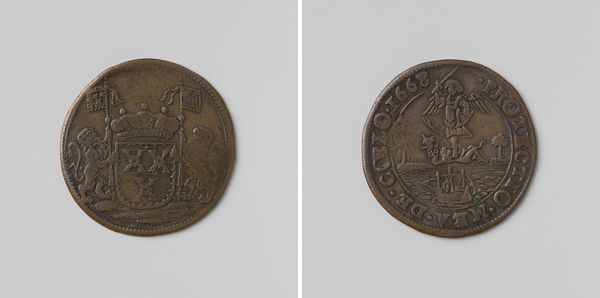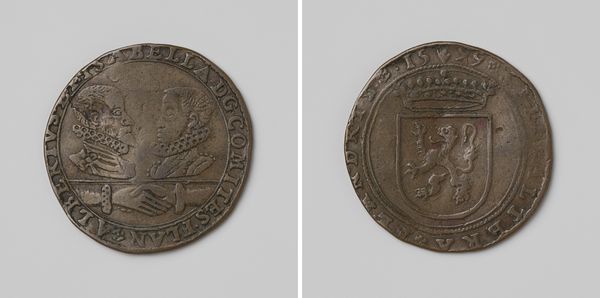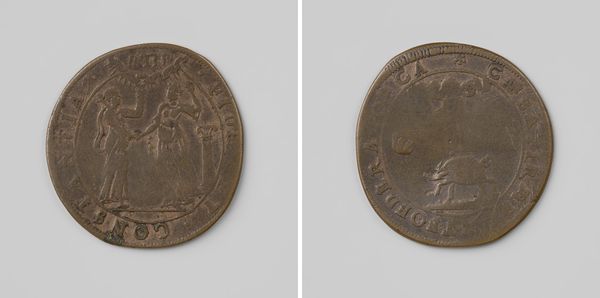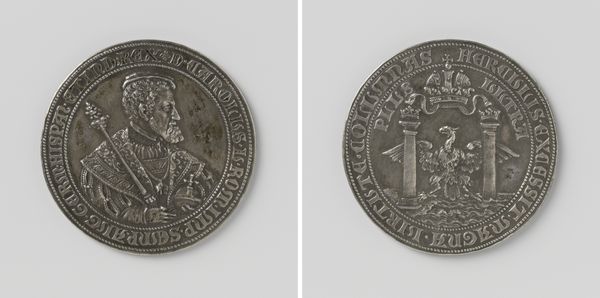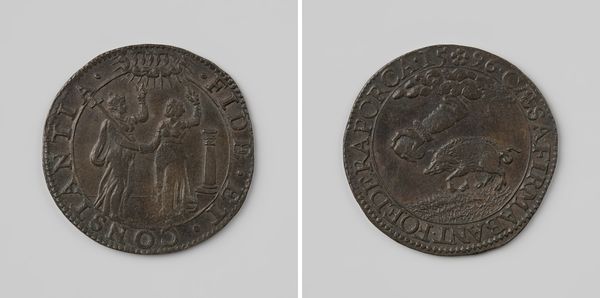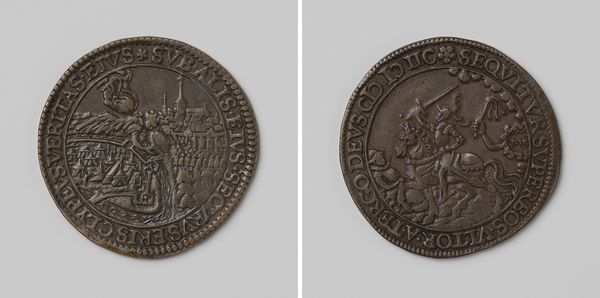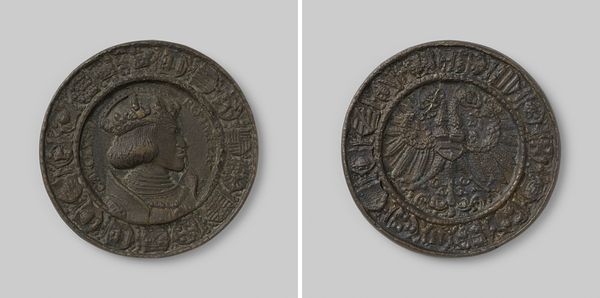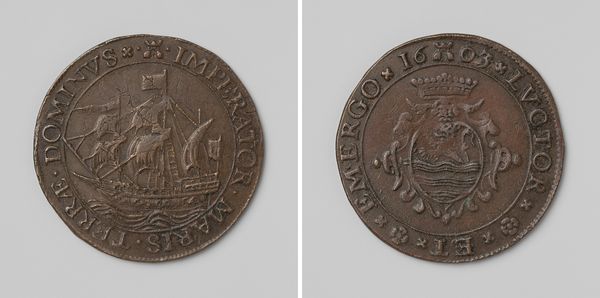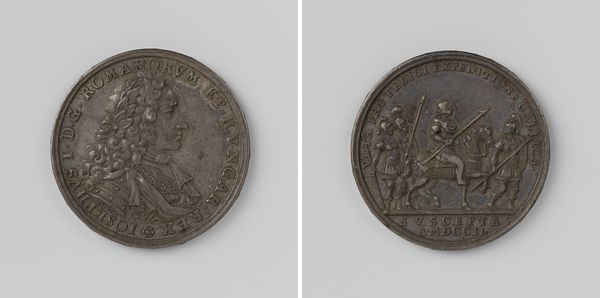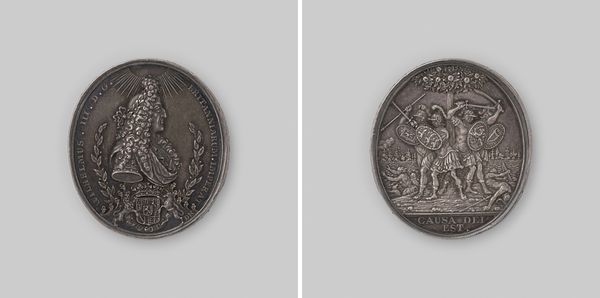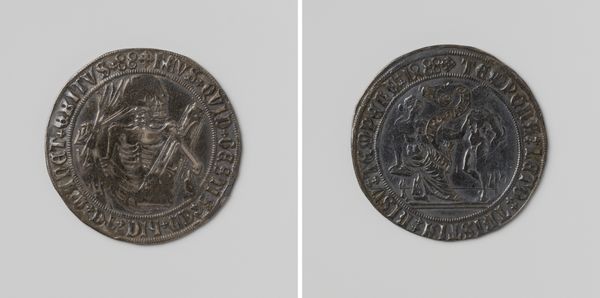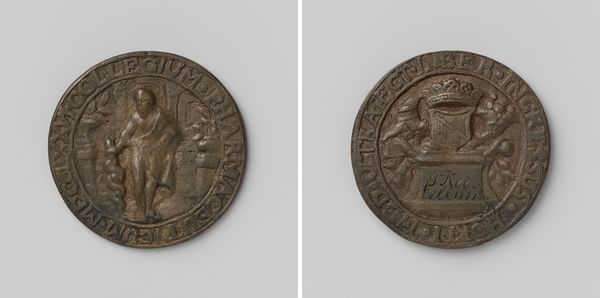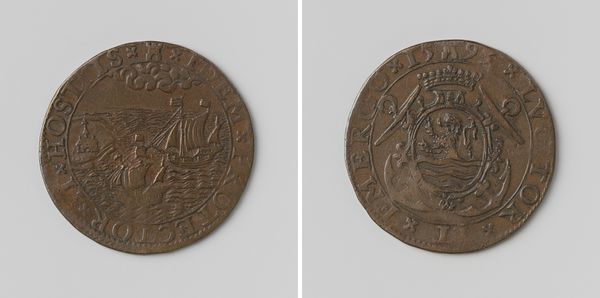
metal, relief, bronze, sculpture
#
portrait
#
medieval
#
metal
#
sculpture
#
relief
#
bronze
#
sculpture
Dimensions: diameter 8.3 cm, weight 145.96 gr
Copyright: Rijks Museum: Open Domain
Curator: Here we have a bronze relief sculpture from 1518, titled "Maximiliaan I schenkt vergiffenis aan Frans van Sickingen"—Maximilian I Grants Forgiveness to Franz von Sickingen, if we're translating. Editor: Immediately striking, isn’t it? The metallic sheen gives it such gravity. Visually, there's a fascinating interplay of textures and a clear commitment to circular composition. Curator: Indeed. These types of portrait reliefs were often commissioned by rulers to commemorate significant events. This particular one serves to commemorate a power dynamic of the period. Franz von Sickingen, a German knight, faced repercussions for his political maneuvering, and Maximilian I used the act of granting forgiveness to consolidate his authority. Editor: The symbolic weight of the imagery is rather heavy, if you think about it. Consider how light plays on the various elements here. In formal terms, the distribution emphasizes the power that Maximilian is wielding in granting forgiveness, it visually signifies political submission. Curator: Exactly! Notice how Maximilian is centrally positioned. It's no accident. He embodies the state and dictates the course of history, at least as he wishes to be seen by his contemporaries. Editor: Semiotically charged to the extreme! But there is great subtlety here as well. The execution feels…delicate, especially in rendering the garments. It offers a refinement within this brutal power dynamic you are describing. It certainly doesn't portray the medieval era as simply barbarous. Curator: I think that subtlety allows us a deeper look into how even 'merciful' acts of governance could simultaneously reinforce and normalize structures of domination in medieval and early modern Europe. This wasn’t about goodness—it was about strategy. And objects like this functioned as propaganda. Editor: Yes, the intention translates beyond the beauty of the design. It prompts reflection, questioning narratives of power and justice. Curator: Agreed. Thinking about it in terms of performative authority is quite interesting—power as performance. The piece acts as evidence, justifying or glorifying acts of imperial dominance through controlled narrative. Editor: Yes. That's the remarkable tension present in examining this piece. Its technical skill, formal arrangement, its pure physicality as an object is so well accomplished. Curator: And at the same time, a work that functions as evidence, a form of material speech from a highly politicized past. Editor: A great reminder that beauty and meaning are not mutually exclusive concepts.
Comments
No comments
Be the first to comment and join the conversation on the ultimate creative platform.
